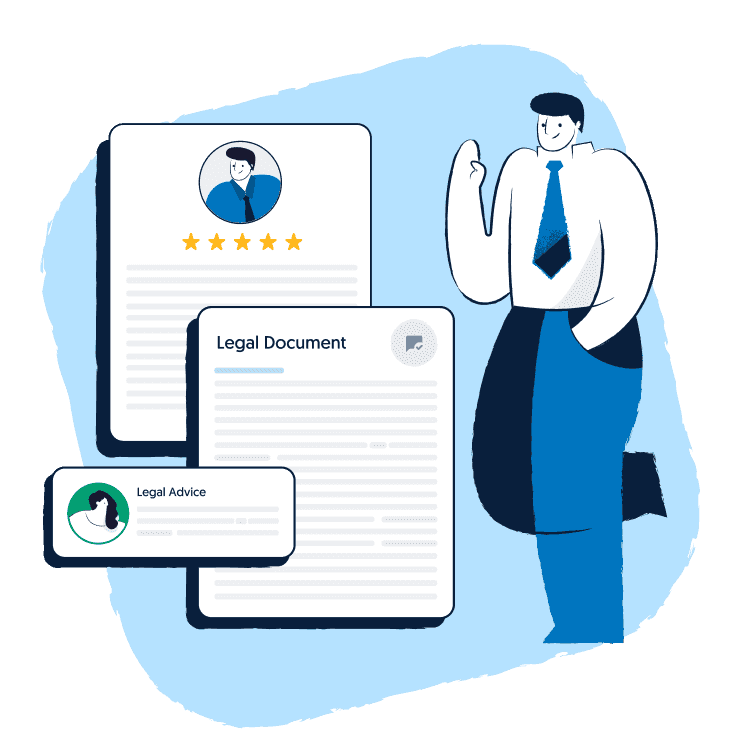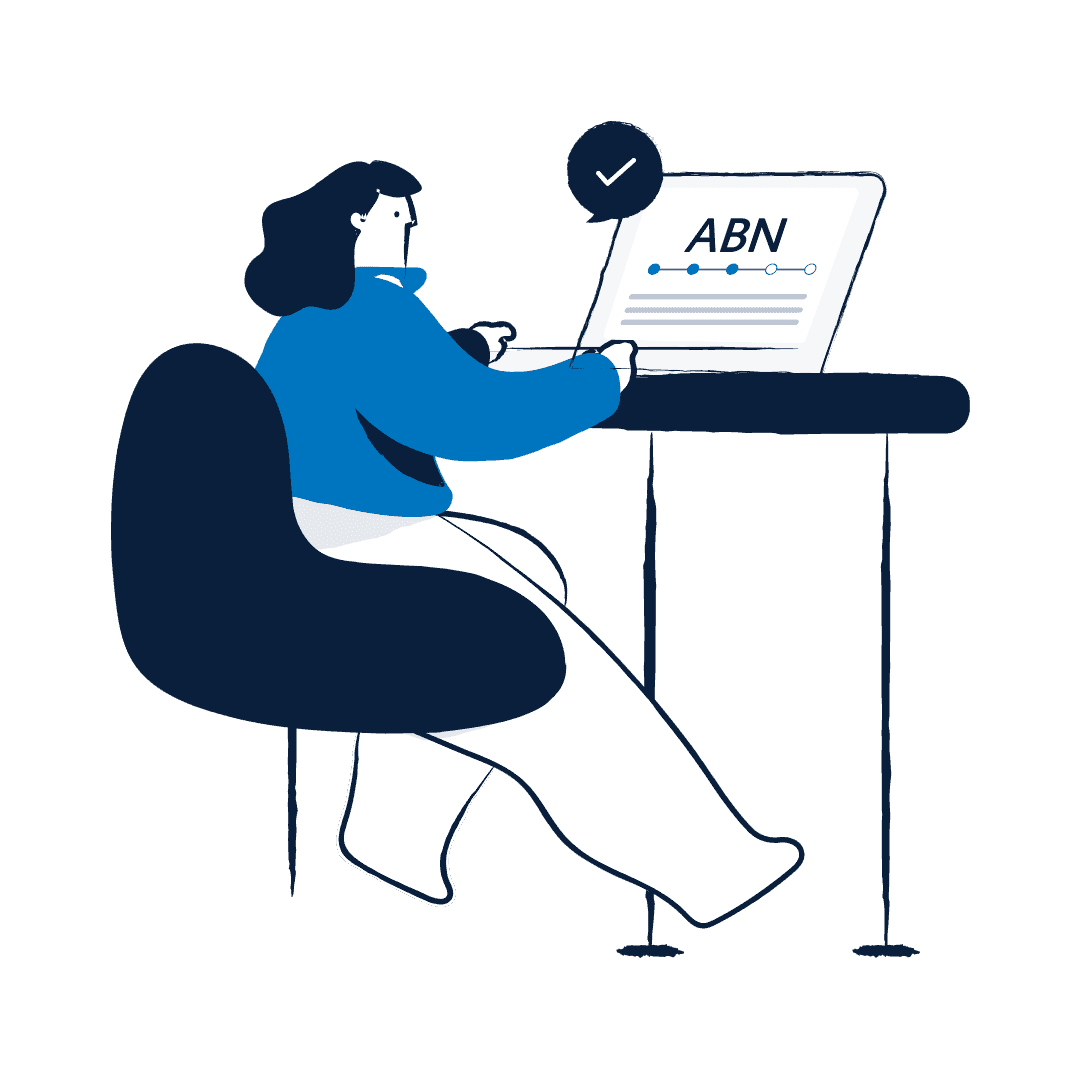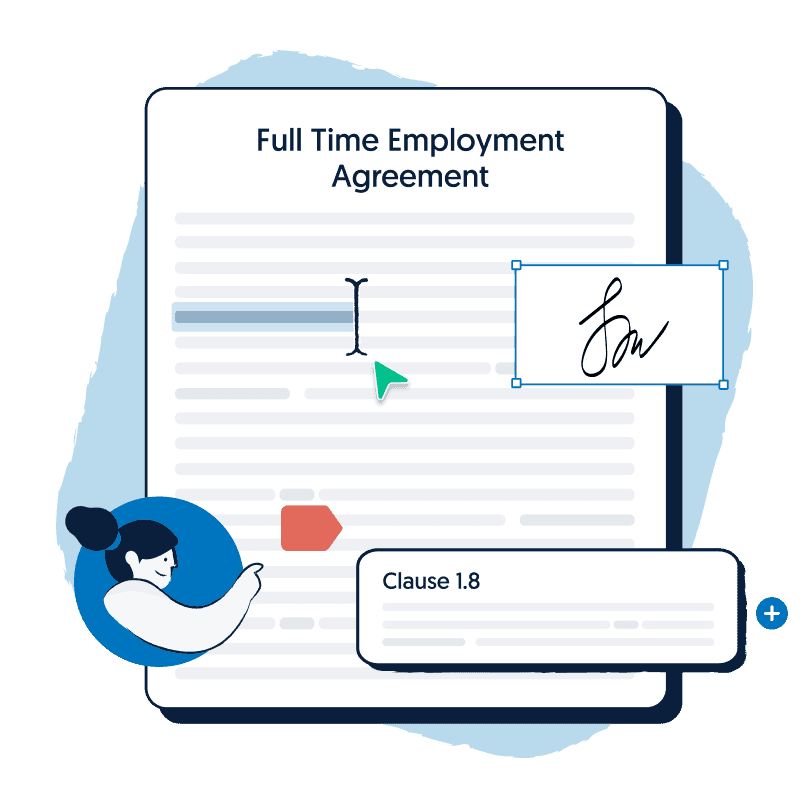Starting a National Disability Insurance Scheme (NDIS) Business can be the most rewarding and exciting experience. With over 530,000 participants receiving funds as part of their NDIS plans to spend on disability support, starting an NDIS business could not have come at a better time.
It’s fantastic to be passionate about starting an NDIS business. However, unlike the standard business model, NDIS business providers must undergo an extensive evaluation process, eligibility, specific criteria and other key requirements before operating.
This is where this guide will help you meet all the key requirements so you can be an NDIS provider in no time.
Want to get started? Read along!
What is an NDIS Business?
NDIS stands for the National Disability Insurance Scheme. The scheme aims to provide more than $22 billion in funding to an estimated 500,000 Australians who suffer from a disability.
An NDIS business, also known as an NDIS provider, can be a person, business or organisation that delivers NDIS-funded support to participants.
While these businesses can also serve the open market, their main focus is providing niche services to individuals with a disability—for example, specialist disability accommodation. As per the NDIS Code of Conduct, Australian NDIS businesses are called upon to promote the overall health, safety and well-being of people with a disability.
An NDIS business is not limited to just a small business. Providers can be:
- Large companies
- Charities
- Not-for-profits
- Sole traders
- Any other business type
An NDIS business can also have different areas of expertise and experience, no matter what type of business structure they choose. If you choose to be an NDIS business, you will be one of the main contact points for NDIS participants.
Benefits of starting an NDIS Business
Starting your own NDIS business offers a wide range of benefits, including the following:
- Offering support to a range of participants
- The opportunity to be part of a dynamic and innovative marketplace
- Being a registered provider will help you market your services
- An opportunity to access supplementary NDIS training modules
How to set up an NDIS Business
Before you can register as an NDIS provider or business, you will first need to start a business for the NDIS Commission to assess whether you’re a suitable applicant to be an NDIS provider.
Starting a business can be daunting, especially a business that will be primarily focused on delivering support to NDIS-funded participants. However, we will take you through the basics of what you need to do to set up an NDIS business ready for registration through the NDIS Commission.
1. Choose a business idea
The first step in starting an NDIS business and becoming a provider is developing a great business idea. If you already have something in mind that you’re passionate about, that is excellent news.
But if you don’t, that’s also okay. If you want to become an NDIS-focused business, your business idea could offer specialised support in the following areas:
- Assistance with daily life — support worker
- Transportation business
- Assistance with social and community participation
- Home modification business
- Improved living arrangements
- Finding and keeping a job
- Improved relationships, health, well-being and learning
- Health – Diabetic management, nutrition, would and pressure care
This list is not exhaustive, so it’s imperative to undergo market research and choose an area of business you will be passionate about.

Get on demand legal advice for one low monthly fee.
Sign up to our Legal Advice Plan and access professional legal advice whenever you need it.
2. Name your NDIS Business
If you already have a business name in mind, that is fantastic. But if you need a little bit of assistance, we have some tips for you. Let’s go through them.
- Your business name should be worth remembering and needs to stand out
- Implement rhymes
- Choose a business name with the same first letter
- Your business name could reflect your product and its benefits
- Have a business name that is easy to pronounce
- A positive connotation for potential customers is always a good idea
Once you figure out the perfect business name, you need to ensure it is available for use. You can do this through Lawpath’s business name registration tool.
3. Write a business plan and research your competitors
A business plan is an important tool for understanding how each element of your business will work together to make it a success. Your business plan should include the following details:
- Business analysis – Outlines the strengths of what your business offers. This can include your present products or services as well as how they can be developed in the future
- Competitive analysis – This section will show the research you have done about your competitors. This is important as it will outline who your competitors in the NDIS field are, and their key strengths and weaknesses
- Customer analysis – it is essential to have in mind who your target audience is so you can target your product or service to suit their needs
- Marketing plan – Conduct a marketing analysis to identify how to better position your business to be competitive
- Financial plan – Think about what funding is required to build your business
If you want some assistance, you can use Lawpath’s Business Plan to ensure business success from the very beginning.

Get a fixed-fee quote from Australia's largest lawyer marketplace.
4. Choose your structure
Once you have written out your business plan, the next step is to choose the business structure for your NDIS business.
An NDIS provider can be large companies, charities, not-for-profits, sole traders or any other business type. Therefore, you ultimately have a wide variety of choosing what type of business structure you’d like to set up.
Depending on what business structure you choose from, you will have different tax obligations, legal requirements, rights and fees. Here is a summary of the different options:
1. Sole trader (or sole proprietor)
A sole trader business is the most simple business structure. Sole trader businesses are operated by one individual. Sole traders have complete control and legal liability for their business. Most small business owners operate using this business structure.
Forming a sole proprietorship is quite simple and takes only a few steps:
- Obtain an Australian Business Number (ABN)
- Registering your business name
- Apply for relevant permits and licenses
- Opening a separate bank account for your business is not mandatory, but you should consider it
- Consider getting insurance for your business, although this is not a mandatory step
- Partnership

Start your ABN application in minutes!
Need an Australian Business Number to start a casual job? We've got you covered.
2. Partnership
A general partnership business structure is between two or more people who operate the business together. They equally share the business’s income and losses. Partners act on behalf of their partners; therefore, partners are liable for the actions of their partners.
Alternatively, a limited partnership structure is available where one or more partners are limited in their liability for the debts and obligations of the business. Limited partnerships require one limited partner and one general partner.
Forming a partnership requires the following steps
- Choose your business partner or partners
- Creating your partnership agreement – A partnership agreements outlines how partners plan to operate and manage the business together.
- Register for an ABN
- Register your business name registered with the Australian Securities and Investment Commission (ASIC)
- You’ll need the appropriate licences to operate your business
3. Company
A company is a corporate structure where you can create a separate legal entity. Therefore the company is its own legal person, separate from all its shareholders and officers. Due to companies having their own legal personality, they are able to sue, be sued and owe debts.
The steps to forming a company are:
- Choose a name for your company – You need to ensure the name of your company shows your legal status. For example, ABC limited liability company (LLC)
- Establish the rules that will govern the company
- Choose your company’s shareholders and directors
- Determine how many shares each shareholder will own and the type of shares they will own
- Register your company in your preferred state or territory
- Select the location of your registered office and primary business
- Complete the necessary paperwork and register your company yourself or through a service provider
4. Not-for-profits and charities
A not-for-profit organisation exists for a purpose and not for commercial gain. They include both charities and other organisations such as sporting clubs and professional associations.
Charities are regulated by the Australian Charities and Not-for-profits Commission (ACNC), which serves to ensure charities are complying with the law. Some well-known examples include Beyond Blue, The Smith Family and World Vision.
Here are the key steps to starting a charity and NPO
- Choose an appropriate legal structure – After applying to the ACNC, you will need to choose your structure. You can choose to operate as an unincorporated association, incorporated association, company, cooperative, indigenous corporation or also a trust.
- Make sure your organisation is not-for-profit – To register with the ACNC, your organisation must be not-for-profit. This can be shown in the governing documents of the company with a non-for-profit clause and by ensuring the organisation acts consistently with this policy.
- Register for an ABN
- If your organisation is set up as a company, appoint your directors
- Register for ACNC so the information can be passed to the Australian Taxation Office (ATO) for charity tax benefits including deductible gift recipient (DGR).
5. Business registrations
Whichever business structure you choose when starting an NDIS business, there are certain registration requirements applicable to all structures.
These requirements ensure that you’re getting taxed at the right time and avoid penalties
- Australian Business Number (ABN) – An Australian Business Number (ABN) is a unique 11-digit number that the ATO will allocate to you. This number is used on your business documents and invoices
- Business name – A business name helps your customers identify your business from others. If your business name is different from your own name, you need to register it
- Tax registrations – Tax implications will apply to you regardless of what type of business structure you choose. It’s best to work out your taxing obligations before you begin as an NDIS business
- Licenses and permits – Depending on your business, licenses and permits will vary

Need help deregistering your business?
6. Ensure that your brand is protected
Once you start your NDIS business, a very important thing to consider is protecting your business name and brand. Brand protection means being able to enforce your rights if your brand is used without your permission.
This comes under intellectual property, which is defined as ‘property of the mind’. Some common examples of intellectual property assets businesses have include:
- Logo
- Slogan
- Phrase
- A type of product
- Business name
The best way to protect your brand is by registering a trademark. A trademark is a sign used to distinguish your business’s goods and services from those of competitors.
Registering a trademark gives you exclusive rights to use a ‘sign’, which could be – letters, numbers, words, phrases, sounds, smells, shapes, logos, pictures, aspects of packaging, or a combination of any of these things.
If you want to protect your brand, you can apply for a trademark through Lawpath in under 5 minutes. Once officially approved, you will receive a certificate, and you’ll be protected for 10 years.
7. Hire your team
Hiring the right team for your NDIS business is crucial. You want to hire a team that will be passionate about your business plan but who also have the right experience and expertise to assist you.
The process can be tricky, but here are a few tips to make it a lot easier:
- Knowing your dream hire – This step involves having a plan of the type of employee you wish to hire for your NDIS business. For example, hiring for experience and expertise to fill a position
- Write a winning job description – Writing a winning job description will help you find a candidate that matches exactly what you’re looking for, it will outline your business’s core values and ensures that you hire someone that will meet your business’s culture
- Post your job opening – You can post your advertisement on your business’s website or free and paid online career websites such as Linkedin, Seek or Indeed
- Interview the most qualified candidates – You should interview the most qualified candidates that applied
- Extend the job offer – Once you have found the perfect employee, you want to move quickly and ensure that you don’t lose the potential hire to other opportunities
Regardless of how many employees you hire or what type of employee you hire, you need to ensure that you’re legally compliant by providing your potential employee with an employee agreement.

Get your Full Time Employment Agreement legal document for free.
Requirements for registering an NDIS Business
Once you have set up your NDIS Business, you must undergo a thorough assessment and meet all of the necessary requirements before becoming an NDIS provider. In this section, we’ve provided all the key compliance requirements that you must undertake.
1. Assess your suitability as an NDIS provider
The first step you need to take before you apply to the NDIS commission is to discover whether there is a demand or need for the product or service that you wish to provide to NDIS participants.
The easiest way to do this is to have a thorough assessment of the NDIS Support Catalogue that provides a detailed list of how the service or product you want to offer will be included as part of the scheme.
Once you have completed this step, you can move on to the next step.
2. Apply to the NDIS Commission and complete the online application
Once the first step is complete, you can now apply to the NDIS commission. Applying to the NDIS commission will require you to complete an online application form which will require you to provide the following details:
1. Provide key information
The first part of the application will require you to provide information such as:
- Your business’s contact details
- Corporate structure
- Where you plan to operate your business
- Your key personnel
- How your business will work
2. Selecting your registration groups
This section will require you to select your registration group to determine which NDIS Practice Standards apply to your business. This is important because:
- Different groups have different levels of risk
- Grouping streamlines the registration for providers
- Certain groups will have certain safeguarding requirements
3. Completing a self-assessment
As part of your online application, you will be required to complete a self-assessment against the NDIS Practice Standards. The purpose of this self-assessment is:
- To see that NDIS Standards will be relevant
- The support and services that your business will deliver
- Uploading evidence of the services that you offer
One important thing to note is that you have 60 days to complete your application. However, you don’t need to submit your application all at one time. You can save it and return it to the application once you’re ready to finalise it.
4. Choose an approved quality auditor
As soon as you submit your online application to the NDIS Commission, you will receive an ‘initial scope of audit’ document by email. In this document, you will find information about how your business needs to register.
Specifically, it will state:
- Whether you require a ‘verification’ or ‘certification’ audit and
- The NDIS Practice Standards and what your business needs to demonstrate to comply with the standards
If your email does require you to have a verification or certification audit, you must choose an approved quality auditor before you can continue.
5. Undergo an Audit
Depending on what your initial scope of audit email states, you will either need to undergo a verification audit or a certification audit as part of your NDIS application.
Here are the differences between the two audits:
- Verification audit (Desktop Audit) – The verification audit is a requirement for providers of services with a lower level of risk or complexity. Between the two types of audits, this is more affordable
- Certification audit – Certification audits are conducted for higher risk, more complex services and supports. As compared to a verification audit, it is more complex and expensive
There is one thing you should keep in mind– certification audits are required if you deliver a wide range of services, and just one falls into a high-risk group.
6. Receive your application outcome
Once you have completed and submitted your application, the NDIS Commission will assess your application. They will:
- Analyse the audit results
- Assess the suitability of your business
- Conduct an assessment of your key personnel – Key personnel are the individuals in your business who hold an operational, management or executive position. For example, Chairperson, Directors, Board Members, Managers and Chief Executive Officers.
- Once the NDIS Commission has assessed the items above, they will notify you whether your application is successful or unsuccessful and provide reasons for their decision.
If you’re a successful applicant, you will receive the following information:
- Certificate of registration — Your registration certificate describes the services or supports you are registered to provide
- Period of registration
- Conditions you must follow to keep your registration
Unsuccessful applicants should do the following:
- Contact the NDIS Commission to request a review within three months of the decision
- The Administrative Appeals Tribunal may review your application if it is still unsuccessful following the review.
Ensure that your business is compliant
Taking care of your business legals and ensuring your business is compliant from the very beginning as an NDIS provider is crucial. Why?
- Avoid any turbulent legal issues in the future
- Act in accordance with Australian Consumer Law and the Australian Competition and Consumer Commission
- You are charging within the NDIS price limits and pricing arrangements
- You are declaring prices to NDIS participants before delivering a service and making payment requests after the service has been delivered
- You are keeping full and accurate records of support delivered in order to proactively manage any perceived and actual conflicts of interest
To ensure that your business is legally compliant, here are the top legal documents for your NDIS business
1. NDIS Service Agreement
NDIS businesses and registered NDIS providers need to provide their customers with a written service agreement to make it clear what is expected in regards to their disability support and their NDIS plan. For example, when and where carers are needed, what assistive technology is needed or what behaviour support is necessary.
Important details of this agreement:
- Details the services to be provided, how services are provided, rights and obligations and information regarding payment
- Outline how many times a day meals are served or what type of food is needed
- Help make sure the participant and registered provider have the same expectations of what supports will be delivered and how they will be delivered
2. NDIS Complaints Policy
The NDIS Complaint Policy is designed to be used by providers of NDIS-funded services to outline the provider’s complaint management procedure.
Important details of the policy include:
- This document formats how the service provider will accept and evaluate complaints from its service recipients – email, phone or online form
- Includes several provisions designed to provide additional support to recipients with special needs, as required by the NDIS (Complaints Management and Resolution) Rules, and the NDIS (Code of Conduct) Rules
3. NDIS Privacy Policy
The NDIS Privacy Policy is designed to be used by providers of NDIS-funded services to outline the provider’s policies and procedures regarding the collection of personal information. Other elements include:
- It outlines the types of personal information collected and stored by the NDIS service provide
- Reasons, processes and procedures for collection and storage
- Provides NDIS clients with clear instructions on how to access and correct their personal information
- How client can make complaints
4. NDIS Incident Management Policy
The NDIS Incident Management Policy is designed to be used by providers of NDIS-funded services to outline the provider’s policy and procedures for handling incidents.
This provides clients and customers with a clear picture of how you manage incidents so they can better understand what is expected of your NDIS business. For example, if an NDIS recipient had a fall, this document will outline how the NDIS provider would deal with it.
5. NDIS Cancellation Policy
The NDIS Cancellation Policy sets out your business’ policies and procedures in the event of a service booking cancellation.
The definitions of ‘adequate notice’ and ‘short notice’ comply with the default minimum requirements set out by the NDIA, but with LawPath NDIS, businesses are given the ability to set more lenient standards if applicable. It is important here to be within the NDIS rules and timeframes.
This document also covers the cancellation process, including customisable fields to tailor to your business’s unique needs.
Market and brand your NDIS Business
There are a few ways to market and brand your NDIS Business effectively. Let’s go through them.
1. Join Clickability
Clickability is Australia’s largest database of NDIS registered and non-registered providers. It’s the go-to place for participants and Support Coordinators who are looking for disability support services.
Remember to ask your participants to leave a review of your services, so others are able to find you and see the great work you do.
2. Set up your website
Once NDIS is ready to go, it’s time to prepare for launch by getting your business ready to show off to the public. This requires setting up a website.
Your business website is an important part of how you communicate with customers today. It will play an essential role in the success of your NDIS business, so it’s important to ensure it’s set up correctly, and you’re covering all grounds of your website legally.
Here are the key steps that you should be aware of.
1. Set up your website and it’s design
Setting up a good-looking website is important as this is your first impression for your audience.
There are many websites that offer free or inexpensive website templates to make designing your website that much easier. You can also enlist the help of a website designer.
However, it is important to make sure that the designer assigns all the intellectual property to you once they have finished the job; otherwise, this can lead to problems later on.
2. Business and legal requirements
Once you set up your new website, there are certain business and legal requirements to be aware of. These include:
- Creating Website Terms of Use – This will set forth the terms and conditions that will govern users’ access to your website and acceptable uses of your website’s services.
- Website Terms and Conditions – Used for the online sale of goods and related services by retailers to consumers
- Domain Registration – Choose a platform for your website and register a website domain
- Privacy policy – Selling products online inevitably means that your website will be collecting customer information. For this reason, you need a privacy policy. A privacy policy specifies how you will collect, use and store customer data.
3. Brand your business on your website
Branding is what people see when they hear about your business, so they can identify its value and personality. Branding your NDIS business in the best way possible will differentiate your business from all the other NDIS business providers out there.
For this reason, it’s very important that you take extra care when you think about how you want your business’s brand to be perceived by your customers. You can think about the following elements:
- Visual elements – logo, official colours, imagery
- Text elements – slogan, tag line, voice, fonts
- Intangibles – like positioning, brand persona
- Personalise your website theme
- Match your colours to your products, services, and print materials
- Use great product photos and images that engage users visually
- A site map that outlines the page structure
- Include your public contact information
3. Marketing Plan
Promoting your NDIS business can be done effectively by implementing a marketing plan. A marketing plan will help:
- You get your product or service in front of the right potential customers
- Keep your strategy on track
- Make sure your brand is being used to the fullest extent possible
- Provides your business’s mission statement
- Details the specific things you want to achieve through your online business
4. Have some social media presence
Social media is online communication that will allow you to interact with your customers and share information in real-time. You can use social media to:
- Reach your customers better – increase market reach
- Create online networks
- Sell and promote your products and services
- Develop your NDIS brand
- Recruit skilled staff – Linkedin
However, there is a risk in using social media for your business doesn’t understand the legal requirements and obligations. Some important things to consider include:
- Be careful about what you say – Any posts and comments published by your business’s social media account are likely to be taken as the actions of the company.
- Watching the comments section – Watch out for any comments on your business’s social media pages that could be defamatory.
- Advertising with consent – You should be careful to always ask for permission if you want to use anyone’s comments or photos in any advertisements for your business.
- Know the rules of the platform – Facebook, Instagram, Twitter, Youtube, and other social media platforms all have distinct social media policies.
You are ready to launch!
If you’ve made it here, congrats! You’ve officially learnt how to start an NDIS business and started your journey as a disability service provider, and we’d like to applaud you.
Running an NDIS business is never easy, and while there are things that can be deprioritised, we hope that all the tips and tricks in this ultimate guide have been useful.
However, we do understand that sometimes you may need further information or assistance. If you do, you can hire a lawyer to help you cover all your legal bases.

Get a fixed-fee quote from Australia's largest lawyer marketplace.






